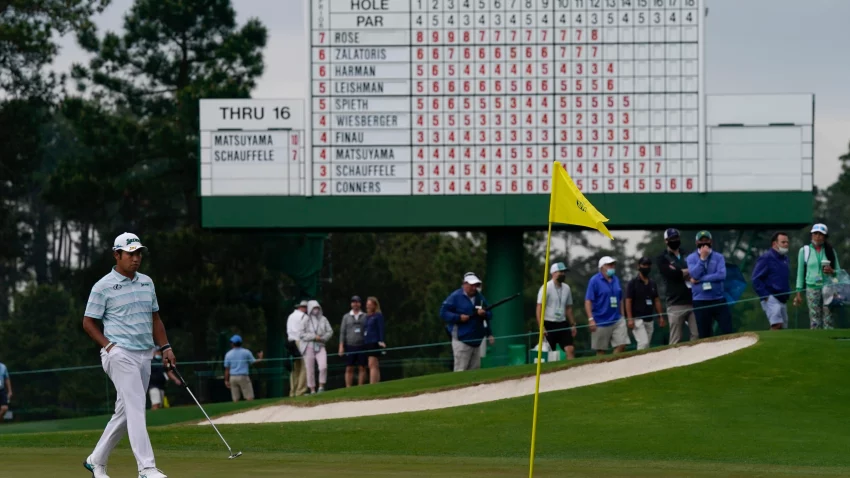Golf enthusiasts around the world have eagerly awaited Masters week every year, and one of the most anticipated aspects is tuning in to watch the tournament on television. But did you ever stop to wonder how much Masters TV coverage has changed over the years? From grainy black-and-white footage to high-definition broadcasts with multiple camera angles, there’s no denying that watching golf from home has come a long way. Join us as we take a trip down memory lane and explore the fascinating evolution of Masters TV coverage.
Masters Tournament History
For more than two decades, the Masters Tournament has been one of golf’s most prestigious events. Held at Augusta National Golf Club in Augusta, Georgia, it features the best players in the world playing for a record-breaking prize money purse.
The Masters started as a 36-hole event in 1934, and it grew to become one of the staples on the professional golf circuit. In 1953, CBS began televising the event, and they were joined by NBC in 1966. The broadcast format has changed over the years, but essentially it has followed a same pattern: live coverage from Thursday through Sunday with highlights shown on Monday night.
Despite being aired live on television, viewers have never had to wait long for a replay. Since 1967, Masters replayed have been available within an hour of finishing play. This efficiency has helped make the Masters one of golf’s most popular events and ensured that no viewer is left out due to an inability to watch live.
Due to its popularity, CBS retained exclusive rights to televise the Masters until 2002 when they opted not to renew their contract with Augusta National Golf Club. As a result, Fox Sports became broadcasters of the event starting in 2003. They have retained that position ever since.
The growth of streaming services like Netflix and Amazon Prime Video has given viewers even more options for watching golf tournaments outside of traditional broadcast windows. While Fox Sports still airs coverage of select major tournaments (the PGA Championship and U.S Open among them
The Role of Masters TV Coverage
Masters coverage has undergone a considerable evolution over the years. When the Masters hit television in 1986, it was only on cable. In 1994, they made their way to broadcast television for the first time and most of the coverage occurred on Fox Sports. However, with the advent of streaming services such as Netflix and Amazon Prime, more viewers are now able to watch Masters events live and in full.
The Role of Masters TV Coverage
As mentioned earlier, Masters coverage has undergone a considerable evolution over the years. Initially, it was only available on cable networks such as Fox Sports 1 and 2. In 1994, however, it made its broadcast television debut when CBS televised all 36 holes of The Masters from Augusta National Golf Club. Since then, live coverage of The Masters has been available on both Fox Sports 1 and 2 as well as CBS and NBC during prime time (8-11 p.m.). Additionally, many streaming services offer full live stream access of The Masters including Netflix, Amazon Prime Video, Sling TV and DIRECTV NOW.
What Changed Over Time?
One reason why Masters coverage has evolved is because technology has changed over time. For example, when The Masters aired on cable networks in 1994 there were only two channels – Fox Sports 1 and 2 – so all 36 holes could be seen at once. However, with broadcast television coming into play in 1994 there was an increased demand for multiple channels so some holes were split into several segments which allowed for more commercials
The Future of Masters TV Coverage
The Masters has been a major golf event since 1934 and it’s one of the most prestigious tournaments in the world. It’s also been a key part of the golfing calendar for many years, with coverage on television being one of the main ways that fans have been able to follow the game.
However, over the years, coverage of this event has changed a lot. In 1934, there was just one TV station broadcasting the tournament and it was limited to within Georgia. Nowadays, there are numerous channels available to viewers all over the world and Masters coverage is one of the biggest events on these networks.
This evolution can be traced back to 1968 when ESPN started covering the Masters. They became one of the main broadcasters and their coverage continues to be highly popular even today. Other broadcasters have followed suit and now Masters coverage is available on all sorts of platforms including terrestrial TV, satellite TV, online streaming services and mobile apps.
This level of accessibility means that even those who can’t attend the event can still watch it through various media outlets. This is particularly important for those who live far away from Augusta National or don’t have easy access to a television set. Masters coverage has also become more diverse in terms of format over time.
For example, in 1978, only American televisions were allowed to broadcast footage from inside Augusta National so international viewers were excluded from watching this year’s event. However, this restriction has now vanished completely with all channels having unrestricted access to
Conclusion
As the Masters series has evolved over the years, so too has the way that it is televised. From black and white broadcasts to live streaming, Masters coverage has gradually changed in order to keep up with modern technology. Fans of golf can look forward to continued evolution in this area as new broadcasting methods are developed and old ones improved.




